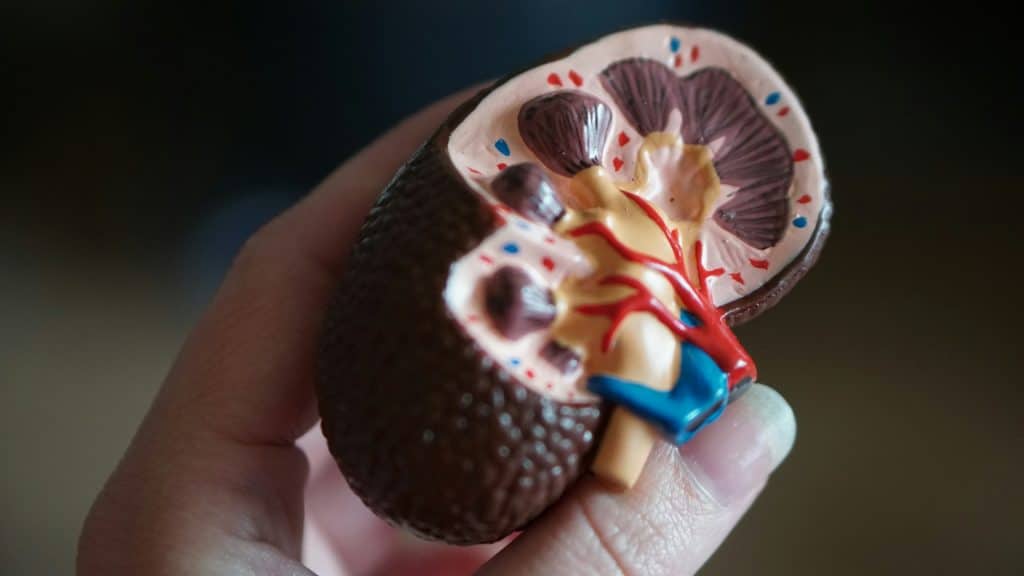Background:
64-year-old-woman, 8 months after receiving a kidney transplant from her husband, presents with diarrhea. The white blood cell count is 1800. The patient has a fever. The liver function tests were slightly elevated. The current creatinine is 1.8 (baseline creatinine is 1.0). The donor is seropositive for cytomegalovirus (CMV). The kidney recipient is negative for CMV. The patient stopped CMV prophylaxis 2 months ago. Current transplant medications include enteric-coated mycophenolate, prednisone, tacrolimus, and trimethoprim-sulfa.
Please answer the following questions:
What does this kidney recipient most likely suffer from?
cytomegalovirus (CMV) infection
Describe the risk factors for cytomegalovirus (CMV) infection in kidney transplant recipients.
Risk for CMV infection in kidney transplant recipients depends on the serologic status of the donor and recipient, with the highest risk seen when a seropositive donor kidney is transplanted into a seronegative recipient.
CMV is a common viral infection post kidney transplantation. Seropositive donors and seronegative recipients pose the highest risk because of the potential for primary infection. Monitoring and preventive strategies are crucial to manage CMV in transplant recipients.
After kidney transplant, prophylactic antiviral therapy may be given. In patients at high risk for CMV, the disease can develop after the medication, usually valganciclovir, is stopped. Standard protocols have patients take 6 months of prophylactic therapy. Our patient developed cytomegalovirus after 8 months, 2 months after viral prophylaxis was discontinued.
How is cytomegalovirus (CMV) infection commonly suspected in kidney transplant recipients?
CMV infection is often suspected when patients exhibit leukopenia and fever during the post-transplant period.
Define the diagnostic method for detecting CMV viremia in kidney transplant recipients.
Viremia is best detected by quantitative polymerase chain reaction (PCR), which is a fast, sensitive, and reliable technique compared to other methods, like serology, early antigen, or CMV antigenemia detection.
What are the manifestations of organ involvement in cytomegalovirus (CMV) disease in kidney transplant recipients?
Organ involvement in CMV disease can manifest as retinitis, pneumonia, encephalitis, hepatitis, and gastrointestinal tract ulceration.
Describe the gold standard for diagnosing tissue-invasive cytomegalovirus (CMV) disease in kidney transplant recipients.
The gold standard for diagnosing tissue-invasive CMV disease is the detection of cytopathic changes or CMV antigens by immunohistochemistry.
Describe the patient’s clinical presentation suggestive of CMV disease.
The patient presented with fever, leukopenia, diarrhea, and elevated liver chemistry studies, raising suspicion of CMV infection
What is the significance of the discordant serostatus between the patient and the transplant donor in relation to CMV infection risk?
The discordant serostatus puts the patient at a high risk for CMV infection after discontinuation of prophylaxis.
Related: Quiz: 5 Months Post Kidney Transplant With Fever And This Lung CT Scan by Michael Aaronson MD
Rash, AKI, Glomerulonephritis – Nephrology Test by Michael Aaronson MD

